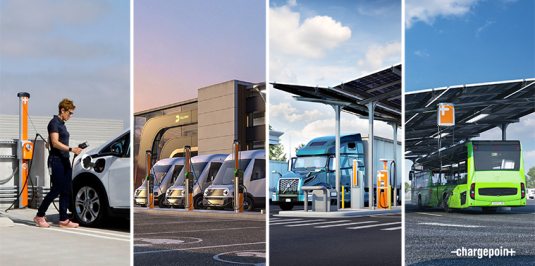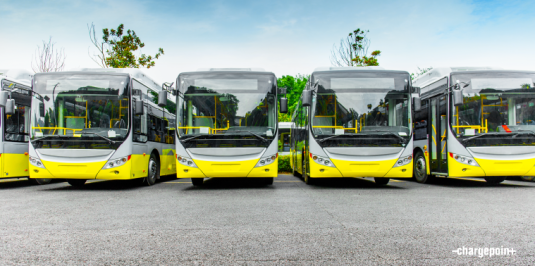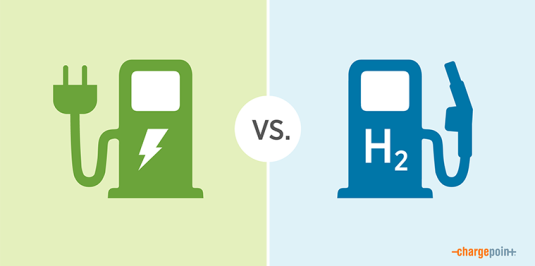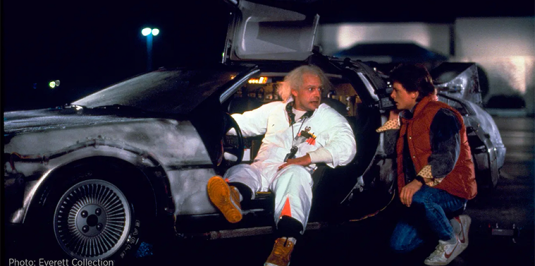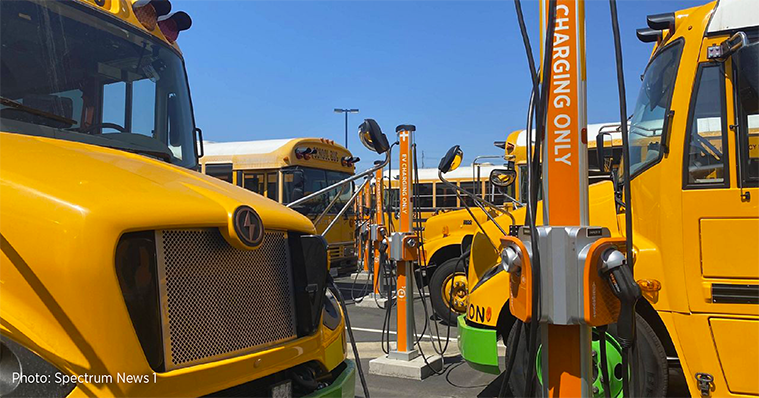
Successful applicants for electric school bus rebates through the EPA recently received their notification of funding and may be wondering about how to start planning their electric bus fleets. Given the recent buzz around the concept of bidirectional charging, including vehicle-to-grid (V2G), as a possible source of energy for the grid and revenue for fleet operators in the future, school bus fleet operators might be wondering about the technology. While V2G is not yet ready for widespread use, we want our customers to understand where the technology is at right now and how to focus on reducing energy costs while maintaining operational availability.
What is bidirectional charging and how does it affect fleets?
Bidirectional charging sends power from an EV battery through a charging station to different targets and can be used for various "vehicle-to-anything" (V2X) applications, including V2G as well as off-grid applications such as vehicle-to-building (V2B) or vehicle-to-home (V2H). Sending power to the grid involves more complexity, including establishing grid interconnection, than sending power to buildings or dedicated fleet microgrids. As a result, fleet operators, drivers and EV charging site hosts need to understand whether, how and when bidirectional charging programs may be able to support their operational needs.

The technology and the markets around bidirectional charging are still in their early stages. PG&E recently became the first utility to announce a V2G rate for commercial customers (limited to three years), and similar programs will need to be consistently available in all markets to let fleets evaluate the costs and benefits of bidirectional charging. It will also be critical for grid operators and federal regulators to modernize energy market rules and regulations to level the playing field and enable meaningful participation by EV charging operators. For more information on this, dive into ChargePoint’s comments to the Federal Energy Regulatory Commission, or FERC, regarding V2G. A range of other codes and standards related to equipment and metering will also need to be finalized to pave the way for seamless V2G for fleets.
Why electric school buses will succeed with or without V2G
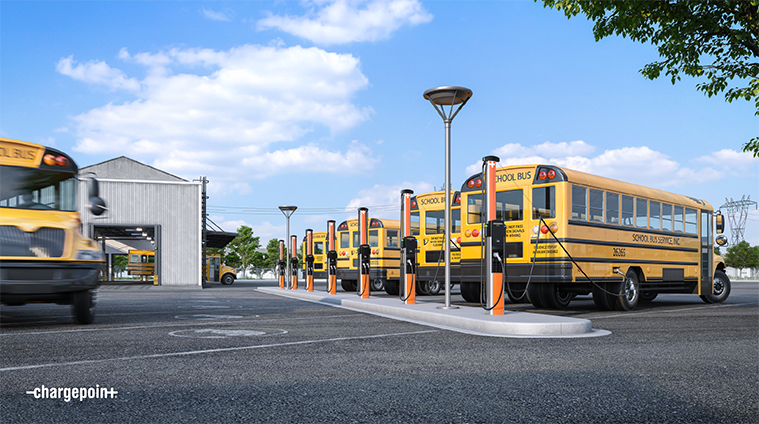
Electric school buses are touted as a potential use case for V2G programs because their predictable routes and long downtimes between duty cycles allow them to rely on more affordable AC charging and reliably plug in at specific times of day that may benefit the grid. Additionally, reduced service during the summer could make school buses candidates to support the grid during heatwaves and other peak load events.
Pilot programs have succeeded in sending energy from buses back to the grid during times of high demand, and some studies estimate potential income of $5,000 to $10,000 per bus per year from bidirectional charging programs. However, these non-contracted “merchant” V2G programs can change from year to year, meaning any income they generate is not predictable.
Estimates for the core payoff from fueling and maintenance savings by switching from diesel to electricity are much clearer, more reliable and larger: studies suggest EVs could deliver $50,000 in overall savings per bus per year, with estimates of 80% lower energy costs and 60% lower maintenance costs. Additionally, electricity prices are much more stable than diesel and gas prices, supporting very predictable operational savings for electric fleets.
What school bus fleets should do now to succeed with electrification
Because V2G is still in early stages, there are many other high-impact efforts fleets should focus on to reduce costs and increase benefits from electrification today. In addition to installing sufficient power and quantity of EV charging stations, setting up software to optimize EV charging is a key step. ChargePoint software supports dynamic load management capabilities, intelligently managing charging schedules to ensure vehicle readiness at the lowest possible energy cost based on your local utility’s electricity tariffs.
Tip: For help estimating required capacity to charge, request a fleet assessment.
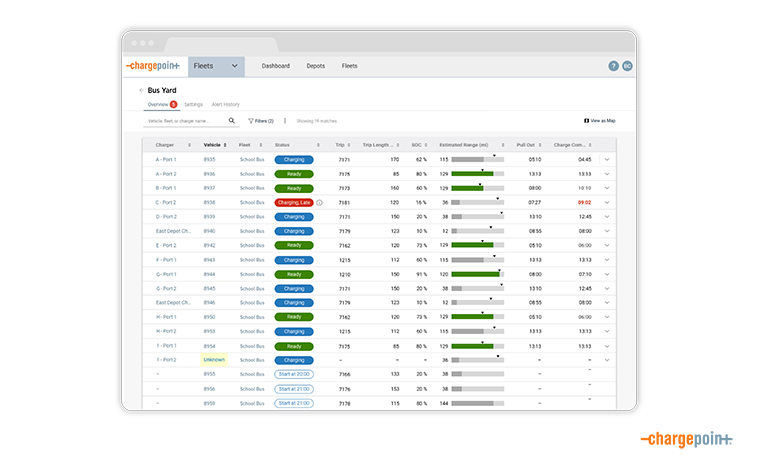
Once charging scheduled and costs are optimized, fleet operators may want to look into setting up their own solar panels and microgrid systems to store energy and charge or precondition vehicles. These investments can have a clearer payoff because they don’t depend on utilities or energy markets.
While bidirectional charging will come to market in some form over the next few years, it’s not yet ready to “graduate” to widespread use. ChargePoint has already helped hundreds of fleets optimize operations for thousands of EVs, and as the market matures, we will continue to be the partner that fleets can rely on to integrate new technologies, including V2G, microgrids, solar and more, seamlessly and at scale.
For now, our experience has shown us that fleets can benefit most by right-sizing their charging infrastructure and optimizing charging schedules and energy use for low cost. Get our free fleet assessment to start the process of electrifying or scaling your school bus fleet.

